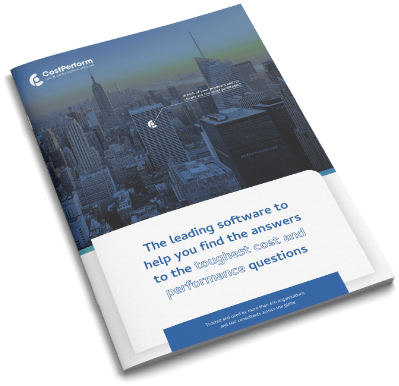When you want to get serious about your business’ costing, there are multiple calculation tools and costing tools available to you: anywhere from Excel to an ERP or an Activity-based Costing vendor. Because there are a lot of options, there’s also a lot of information out there. We have organized this information to help you choose the right calculation tool or costing tool for your business. Regardless of the calculation tool or costing tool you choose, it shouldn’t limit you in the scope and level of detail of the costing information you require.
Different types of calculation tools and costing tools
The way we look at it: four quadrants make up the calculation tool and costing tool landscape. They can be plotted along two axes: functionality (maturity) and automation & repeatability.
Spreadsheet replacements
Functionality: high | Automation: low
Spreadsheet replacements are often the first step away from working with Excel: the start of (costing) calculations for many businesses. The switch from Excel to an alternative often feels less intimidating because many people are used to working with Excel. Fun fact: spreadsheets are often a data source for CostPerform. However, the flexibility and freedom of spreadsheets force you to design your own calculations, which can be perceived as a drawback.
Single purpose vendors
Functionality: medium | Automation: medium
Single purpose vendors account for a lot of the development of your calculations for you. These vendors are focused on costing in a specific industry or market and/or costing with a particular goal. So if you’re working solely with IT, healthcare, or automobile costing, single purpose vendors might be the best option for you. Developing a use case for your company/industry can help you decide.
ERP vendors
Functionality: low | Automation: medium/high
An ERP system has an embedded data source. ERPs are suited for businesses that utilize manufacturing processes and/or deal with a lot of indirect costs. They’re great for determining the cost price of products or services. A thing to note: ERPs usually see costing as a financial account issue and are less focused on determining possibilities from a managerial accounting perspective.
Activity-based Costing (ABC) vendors
Functionality: high | Automation: high
ABC vendors are closest to CostPerform’s software. They are high in functionality, as well as high in automation. This means that the software is structured and suited for multiple purposes, which takes away a lot of the development of your calculations ánd improves the automation. It’s often possible to link different and/or various data sources. Whether Activity-based Costing or Time-driven Activity-based costing is right for you fully depends on how you’ve structured your business and the market in which you operate.
How does CostPerform compare?
CostPerform falls into the bracket of high functionality and high automation. As we said, ABC vendors are not that different. With CostPerform, you can use your costing information for financial accounting purposes as well as management accounting purposes, and it’s not limited to any niche costing. This makes our costing software fit for any purpose: you decide how to shape your costing model and pick the pieces you need using CostPerform. Over 200 organizations across the world use CostPerform as a SaaS solution. An additional bonus: you get 20+ years of experience with your cost and performance software.
